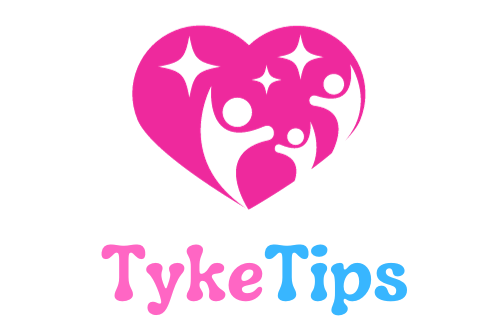You’re in for a treat as you learn all about Montessori at home with shelf rotation. This video by Hapa Family will guide you on how to organize and rotate your child’s Montessori shelves, providing tips on shelving units, contents, and rotation options. Get ready to create a stimulating environment for your little one to thrive in!
Discover the world of Montessori with this informative video that showcases how to implement shelf rotation at home. From setting up the shelves to selecting the right materials, you’ll find everything you need to create an engaging space for your child to explore and learn. Embrace the Montessori approach and witness the positive impact it can have on your child’s development.

Benefits of Shelf Rotation
Shelf rotation is a key aspect of the Montessori method that offers numerous benefits for children. By implementing a rotating system for the contents of your child’s shelves, you are promoting their independence, encouraging focus and concentration, and supporting cognitive development.
Promotes independence
When children have the opportunity to choose their activities independently from the shelves, they develop a sense of autonomy and self-reliance. By allowing them to select what they want to work on, you are empowering them to make decisions and take charge of their own learning.
Encourages focus and concentration
Having a set of activities available on the shelves creates a structured environment that helps children focus on one task at a time. This promotes concentration and allows them to fully engage with the materials without distractions, leading to deeper learning experiences.
Supports cognitive development
By offering a variety of developmentally appropriate materials on the shelves, children have the opportunity to engage in activities that challenge their cognitive abilities. From puzzles and matching games to practical life activities, each item contributes to the child’s cognitive growth and enhances their problem-solving skills.
Setting Up Montessori Shelves
Setting up Montessori shelves at home requires careful consideration of the child’s needs and developmental stage. By following some simple guidelines, you can create a stimulating environment that encourages learning and exploration.
Choose child-sized shelves
Selecting shelves that are at the child’s eye level and easily accessible allows for independent exploration without the need for adult assistance. Child-sized furniture promotes a sense of ownership and encourages children to engage with the materials on their own terms.
Include developmentally appropriate materials
Curate a selection of materials that are suitable for the child’s age and stage of development. Incorporate items that are engaging, hands-on, and promote learning across various areas, such as sensory exploration, fine motor skills, and problem-solving.
Ensure materials are accessible
Arrange the materials on the shelves in an organized and visually appealing manner. Ensure that everything is within reach for the child, making it easy for them to select and return items to their designated spots. Accessibility promotes independence and encourages children to take initiative in their learning.
Shelf Content Ideas
When deciding on what to include on your child’s Montessori shelves, it’s essential to consider a variety of activities that cater to different aspects of their development. Here are some content ideas to get you started:
Puzzles and matching games
These types of activities are not only fun but also help children develop their problem-solving skills and spatial awareness. Puzzles and matching games challenge the child’s cognitive abilities and encourage logical thinking.
Sensorial materials like sorting activities
Sensorial materials engage the child’s senses and promote exploration and discovery. From sorting by color, shape, or texture, these activities help children refine their senses and develop a keen awareness of the world around them.
Practical life activities such as pouring and scooping
Practical life activities are an essential component of the Montessori method, as they teach children real-life skills and promote independence. Including activities like pouring and scooping can help children develop fine motor skills and gain confidence in their abilities.
Options for Shelf Rotation
Creating a rotation schedule for your child’s Montessori shelves allows you to introduce new materials and keep the learning environment fresh and exciting. Here are some options for implementing shelf rotation effectively:
Weekly rotation schedule
Consider changing the contents of the shelves on a weekly basis to provide variety and keep your child engaged. This schedule allows for regular updates to the materials and ensures that there is always something new and interesting for the child to explore.
Based on child’s interests and abilities
Take cues from your child’s preferences and abilities when deciding on what to rotate on the shelves. By observing their interests and providing materials that align with them, you can create a tailored learning experience that keeps the child motivated and engaged.
Seasonal rotation to introduce new themes
Consider incorporating seasonal themes into your shelf rotation to align with holidays, changing weather, or special events. Introducing new materials and activities that reflect the season can spark curiosity and make learning more relevant and engaging for the child.
Creating a Rotating System
To make the process of shelf rotation smooth and efficient, consider implementing a rotating system that involves the child in the decision-making process. Here are some tips for creating an effective rotation system at home:
Labeling shelves for easy organization
Labeling each shelf with the corresponding activities or materials helps the child identify and select items independently. Clear labels also facilitate organization and make it easy to maintain the rotation schedule.
Involving the child in the rotation process
Encourage your child to participate in selecting, organizing, and rotating materials on the shelves. By involving them in the process, you are promoting a sense of responsibility and ownership over their learning environment.
Regularly assessing and updating shelf content
Periodically evaluate the effectiveness of the materials on the shelves and make adjustments based on your child’s interests and developmental progress. By regularly updating the content, you can ensure that the environment remains engaging and aligned with your child’s learning needs.
Benefits of Montessori Method at Home
Implementing Montessori principles at home provides numerous benefits for children that extend beyond the academic realm. By creating a Montessori-inspired environment, you are fostering skills and qualities that contribute to your child’s overall development.
Encourages self-directed learning
The Montessori method prioritizes self-directed learning, allowing children to take the lead in their educational journey. By providing a prepared environment with engaging materials, you are empowering your child to explore, discover, and learn independently.
Promotes order and organization in the home environment
Montessori principles emphasize order and structure in the learning environment, which translates into promoting these qualities in the home setting. By following a rotating system and maintaining an organized space, you are instilling valuable habits of tidiness and responsibility in your child.
Fosters a sense of independence and responsibility
Through the Montessori method, children learn to take responsibility for their actions, make choices independently, and contribute to their own learning process. By encouraging independence and autonomy, you are equipping your child with essential life skills that will serve them well in the future.
Challenges of Implementing Shelf Rotation
While shelf rotation offers many benefits, it also comes with its own set of challenges that parents may encounter. By being aware of these challenges and implementing strategies to overcome them, you can ensure a successful shelf rotation system.
Finding time for regular rotation
One of the biggest challenges of shelf rotation is finding the time to plan, organize, and execute the rotation schedule. Balancing work, household responsibilities, and childcare can be demanding, but prioritizing the educational benefits of shelf rotation can help overcome this challenge.
Ensuring appropriate materials are always available
Another challenge is ensuring that the materials on the shelves are always developmentally appropriate and engaging for the child. Constantly evaluating and updating the content can be time-consuming but is essential to providing a stimulating learning environment.
Balancing variety and consistency in shelf content
Finding the right balance between introducing new materials and maintaining consistency in the learning environment can be tricky. While variety is essential for keeping children engaged, consistency provides a sense of familiarity and security for the child.
Tips for Successful Shelf Rotation
To overcome the challenges of implementing shelf rotation and ensure a successful Montessori experience at home, consider the following tips:
Start with a small selection of materials
Begin with a curated selection of materials that cater to your child’s interests and developmental needs. Starting small allows you to gauge your child’s preferences and adjust the content accordingly.
Observe and adapt to your child’s preferences
Pay attention to your child’s interactions with the materials on the shelves and adjust the rotation schedule based on their preferences. By observing their reactions and engagement levels, you can tailor the content to their individual learning style.
Create a visual schedule for rotation
Establish a visual schedule or calendar that outlines the rotation plan for the shelves. This helps both you and your child stay organized and informed about when and how the contents of the shelves will be updated.
Incorporating Montessori Principles
When implementing shelf rotation and creating a Montessori-inspired environment at home, it’s essential to align your practices with key Montessori principles. By following these principles, you can ensure that your child receives the full benefits of the Montessori method.
Follow the child’s interests and developmental stages
Adapt the materials on the shelves to cater to your child’s unique interests and developmental stage. By providing activities that are engaging and challenging, you are promoting growth and learning in a tailored and effective manner.
Promote hands-on learning experiences
Encourage hands-on exploration and discovery by including materials that require active engagement and manipulation. Hands-on activities foster sensory development, fine motor skills, and critical thinking, laying the foundation for lifelong learning.
Encourage independence through self-directed activities
Empower your child to choose their activities, work at their own pace, and take ownership of their learning process. By promoting independence and autonomy, you are fostering a sense of confidence and self-reliance in your child.
Conclusion
Shelf rotation is a valuable tool for implementing Montessori principles at home, fostering independence, concentration, and cognitive development in children. By carefully curating shelf content and implementing a rotation system, parents can create a stimulating environment that supports their child’s growth and learning. Through a balanced approach that combines variety, consistency, and child-led exploration, you can provide your child with a rich and engaging learning experience that lays the foundation for lifelong success.

